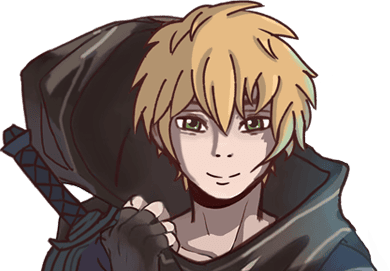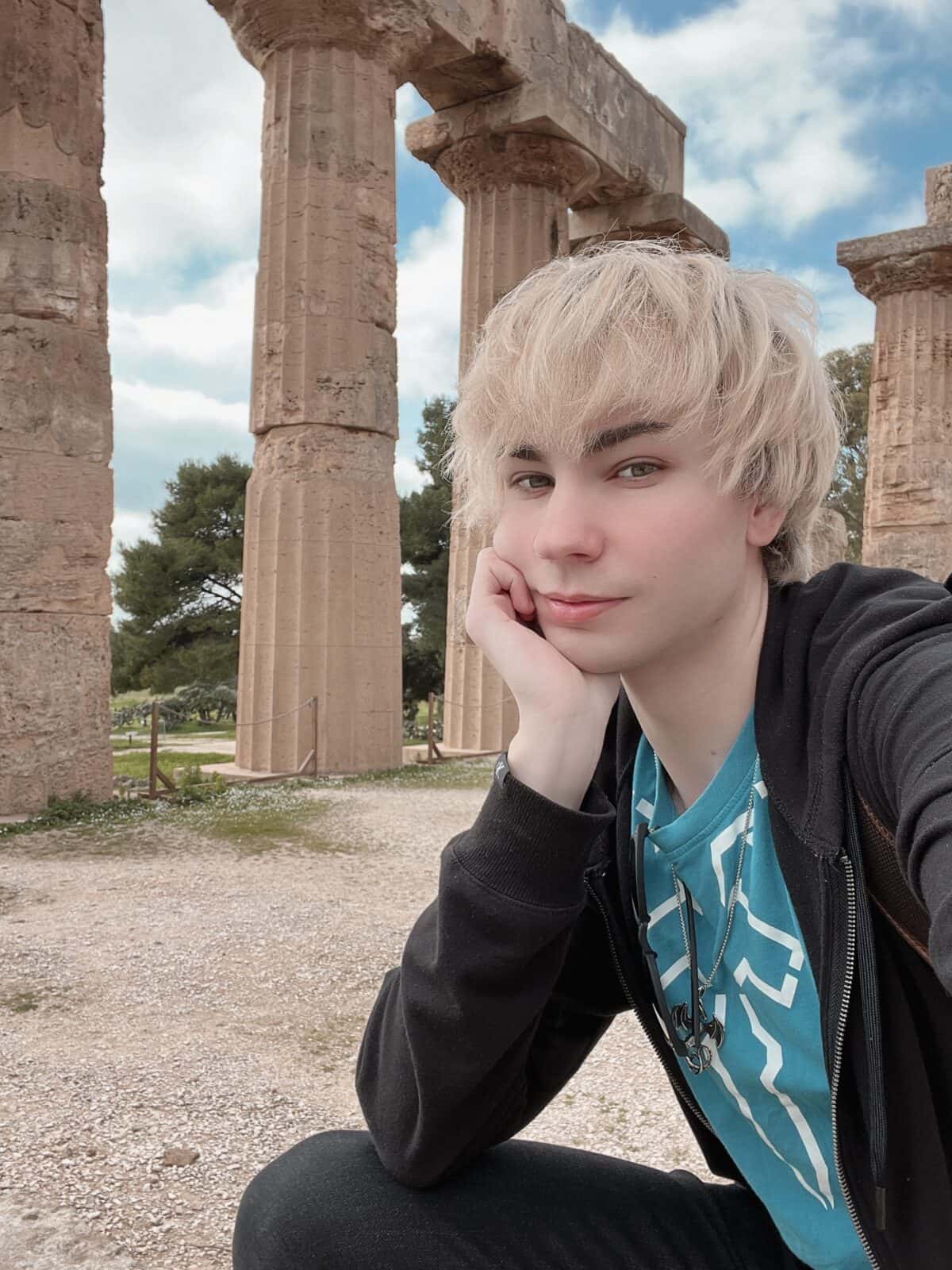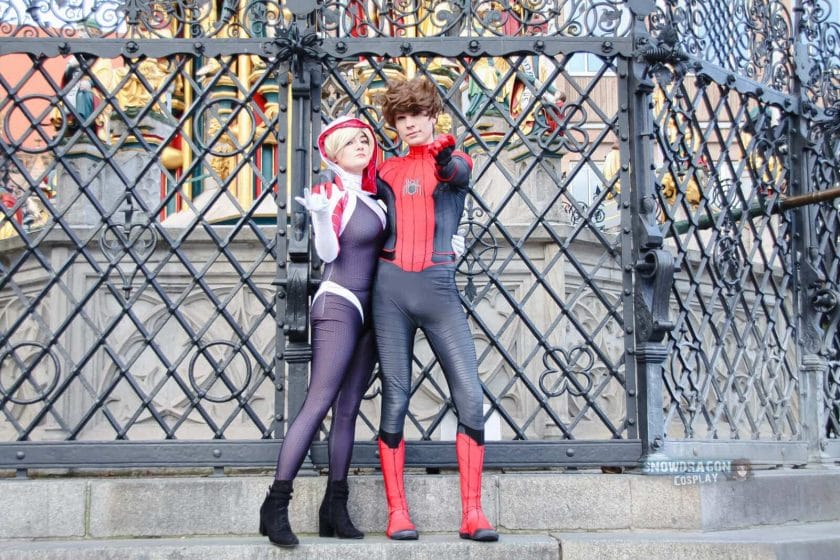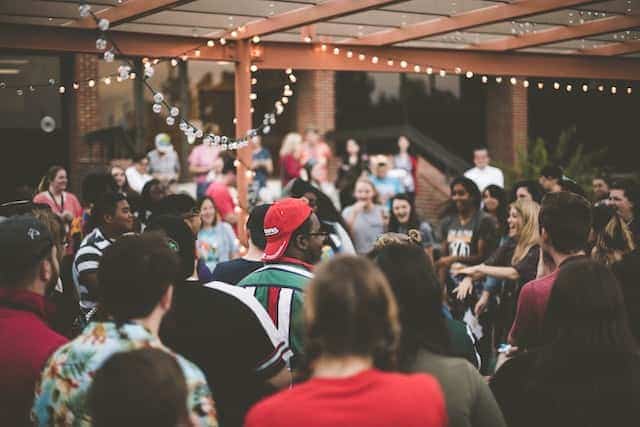Author
-

German Cosplayer from Nürnberg, professional Model & Walkingact for events & content creator.
https://images-wixmp-ed30a86b8c4ca887773594c2.wixmp.com/f/1090ad76-cdf3-4705-829f-dca28f830404/d224wvx-d7a2cd15-c8a9-4161-be84-52d159f48e83.png/v1/fill/w_600,h_1260,q_80,strp/shuichi___ouji_style_by_keikochansg_d224wvx-fullview.jpg?token=eyJ0eXAiOiJKV1QiLCJhbGciOiJIUzI1NiJ9.eyJzdWIiOiJ1cm46YXBwOjdlMGQxODg5ODIyNjQzNzNhNWYwZDQxNWVhMGQyNmUwIiwiaXNzIjoidXJuOmFwcDo3ZTBkMTg4OTgyMjY0MzczYTVmMGQ0MTVlYTBkMjZlMCIsIm9iaiI6W1t7ImhlaWdodCI6Ijw9MTI2MCIsInBhdGgiOiJcL2ZcLzEwOTBhZDc2LWNkZjMtNDcwNS04MjlmLWRjYTI4ZjgzMDQwNFwvZDIyNHd2eC1kN2EyY2QxNS1jOGE5LTQxNjEtYmU4NC01MmQxNTlmNDhlODMucG5nIiwid2lkdGgiOiI8PTYwMCJ9XV0sImF1ZCI6WyJ1cm46c2VydmljZTppbWFnZS5vcGVyYXRpb25zIl19.eKOGWJgClQBV7bwKKRQINUwsrLCg5v-vgh0HwWZ1log
1. What is ouji fashion and how did it originate?
Ouji fashion, also known as “prince” or “boystyle” fashion, is a style that originated in Japan and is characterized by its elegant and refined aesthetic inspired by European aristocracy. It is often associated with the subculture of visual kei, a music genre known for its flamboyant and theatrical style. Ouji fashion draws inspiration from historical clothing worn by princes and nobles, incorporating elements such as ruffles, lace, and tailored suits.
The origins of ouji fashion can be traced back to the 1980s when Japanese musicians began experimenting with gender-bending styles influenced by Western rock bands like Queen and David Bowie. These musicians embraced a more feminine appearance, which eventually led to the development of ouji fashion as a separate style within the visual kei subculture.
In recent years, ouji fashion has gained popularity outside of Japan, with enthusiasts around the world embracing its unique blend of elegance and playfulness. It has become a way for individuals to express their creativity and challenge traditional gender norms through fashion.
2. Who are some key figures or designers associated with ouji fashion?
There have been several key figures in the development of ouji fashion who have contributed to its popularity and recognition within the alternative fashion community. Some notable designers include:
1. Mana: Mana is a Japanese musician and designer who played a significant role in popularizing ouji fashion through his band Malice Mizer. He founded his own brand, Moi-mme-Moiti, which specializes in gothic-inspired clothing including ouji-style outfits.
2. Atelier Boz: Atelier Boz is a Japanese brand known for its high-quality garments inspired by historical European clothing. They incorporate elements of ouji fashion into their designs, creating elegant and sophisticated pieces.
3. Alice and the Pirates: Alice and the Pirates is a sub-brand of the popular lolita fashion brand, Baby, The Stars Shine Bright. They specialize in ouji fashion, creating elaborate outfits with a gothic twist.
These designers have played a crucial role in shaping the aesthetics and trends within ouji fashion, providing enthusiasts with a range of options to express their individual style.
3. How does ouji fashion differ from other alternative fashion styles like lolita or visual kei?
While ouji fashion shares some similarities with other alternative fashion styles like lolita and visual kei, it also has distinct characteristics that set it apart:
1. Lolita Fashion: Lolita fashion is known for its doll-like aesthetic and focuses on femininity and modesty. It often features intricate lace, petticoats, and bows. In contrast, ouji fashion embraces a more masculine appearance with tailored suits, ruffles, and military-inspired elements.
2. Visual Kei: Visual kei is a music genre and subculture that incorporates flamboyant and theatrical elements into its style. While ouji fashion originated within the visual kei subculture, it has evolved into a separate style that focuses on elegance and refinement rather than the boldness associated with visual kei.
Overall, ouji fashion offers individuals who may not resonate with the ultra-feminine aesthetics of lolita or the boldness of visual kei an alternative way to express themselves through clothing that blends historical European influences with modern sensibilities.
4. Can you describe the typical aesthetic elements of ouji fashion?
Ouji fashion encompasses several aesthetic elements that combine to create its distinctive look:
1. Tailored Suits: A key element of ouji fashion is the incorporation of tailored suits inspired by historical European clothing worn by aristocracy. These suits are often made from high-quality fabrics such as velvet or tweed and feature intricate details such as ruffles, lace, and decorative buttons.
2. Ruffles and Lace: Ruffles and lace are commonly used to add a touch of elegance and femininity to ouji outfits. They can be found on shirts, cuffs, collars, and even pants.
3. Military-inspired Details: Ouji fashion often incorporates military-inspired elements such as brass buttons, epaulets, and braiding. These details add a sense of regality and sophistication to the overall look.
4. Accessories: Accessories play a crucial role in completing an ouji outfit. Bow ties, cravats, top hats, pocket watches, and gloves are commonly worn to enhance the overall aesthetic.
The combination of these elements creates a refined and elegant appearance that is both playful and sophisticated.
5. What are some common materials or fabrics used in creating ouji outfits?
Ouji fashion embraces high-quality materials that add to its luxurious aesthetic. Some common materials used in creating ouji outfits include:
1. Velvet: Velvet is a popular fabric choice for ouji fashion due to its soft texture and rich appearance. It adds a touch of opulence to suits, jackets, and accessories.
2. Tweed: Tweed is another favored fabric in ouji fashion due to its durability and classic appeal. It is often used for tailored suits or blazers.
3. Lace: Lace is frequently incorporated into ouji outfits to add delicate detailing and femininity. It can be found on collars, cuffs, or as trim on shirts or jackets.
4. Satin: Satin is commonly used for linings or accents on garments such as vests or waistcoats. Its smooth finish adds a touch of luxury to the overall look.
These materials contribute to the overall elegance and refinement of ouji fashion while also ensuring comfort for the wearer.
6. How has ouji fashion evolved over time, and what are some current trends within the style?
Ouji fashion has evolved significantly since its inception, reflecting changes in fashion trends and individual expressions of style. In recent years, there has been a shift towards incorporating more modern elements while still maintaining the core aesthetic of ouji fashion.
One current trend within ouji fashion is the fusion of traditional elements with streetwear influences. This can be seen in the pairing of tailored suits with sneakers or incorporating graphic t-shirts into outfits. This blend of high-fashion and casual streetwear adds a contemporary twist to the classic ouji look.
Another trend is the use of bold colors and patterns. While traditional ouji fashion often features muted tones such as black, white, or navy, there has been an emergence of outfits incorporating vibrant colors like red, purple, or even pastels. Patterns such as plaids or florals are also being embraced to add visual interest to outfits.
Overall, these trends demonstrate how ouji fashion continues to evolve and adapt to contemporary tastes while staying true to its roots in elegance and refinement.
7. Are there any specific subcategories or variations within ouji fashion?
Within ouji fashion, there are several subcategories and variations that allow individuals to further personalize their style:
1. Classic Ouji: Classic ouji focuses on traditional elements and aesthetics inspired by historical European clothing worn by nobles and princes. It emphasizes refined tailoring, lace details, and a more subdued color palette.
2. Gothic Ouji: Gothic ouji incorporates darker elements such as black lace, leather accents, and Victorian-inspired accessories. It creates a more dramatic and mysterious look compared to other variations.
3. Punk Ouji: Punk ouji combines elements of punk fashion with the elegance of ouji style. It often includes studs, spikes, tartan patterns, and distressed details to create a rebellious and edgy look.
4. Casual Ouji: Casual ouji takes a more relaxed approach to the style, incorporating everyday clothing items such as jeans or t-shirts while still maintaining key ouji elements like ruffles or bow ties. It offers a more accessible and versatile option for those who want to incorporate ouji fashion into their daily wardrobe.
These subcategories and variations within ouji fashion allow individuals to explore different aesthetics and express their personal style within the broader framework of the style.
8. How does gender play a role in ouji fashion, and can anyone wear this style regardless of their gender identity?
Gender plays an interesting role in ouji fashion as it challenges traditional notions of masculinity and femininity. While the style originated as a way for men to embrace more feminine appearances within the visual kei subculture, it has evolved into a broader expression of gender-fluidity in fashion.
Ouji fashion allows individuals of any gender identity to embrace its aesthetic and incorporate it into their personal style. The emphasis is on self-expression rather than conforming to societal expectations. Whether someone identifies as male, female, non-binary, or any other gender identity, they are welcome to wear ouji fashion and make it their own.
This inclusivity is one of the reasons why ouji fashion has gained popularity among individuals seeking alternative forms of self-expression that transcend traditional gender norms. It provides a space for creativity and individuality without limitations based on gender identity.
9. What are some popular accessories or embellishments often seen in ouji outfits?
Accessories play a crucial role in completing an ouji outfit and adding those finishing touches that enhance the overall aesthetic. Some popular accessories and embellishments often seen in ouji outfits include:
1. Bow Ties: Bow ties are a signature accessory in ouji fashion. They come in various styles, from classic black satin to elaborate bows with lace or ribbon detailing. They can be worn traditionally with a shirt or incorporated into other accessories like chokers or hairpieces.
2. Pocket Watches: Pocket watches add a touch of vintage charm to ouji outfits. They can be attached to waistcoats or vests using chains and are often seen as a symbol of sophistication and elegance.
3. Top Hats: Top hats are a staple accessory in ouji fashion, adding height and drama to an outfit. They come in different styles and materials, ranging from classic black felt to more ornate designs adorned with feathers or lace.
4. Cravats: Cravats are similar to neckties but have a looser, more relaxed appearance. They can be made from various fabrics such as silk or lace and add a touch of refinement to an ouji ensemble.
5. Gloves: Gloves, particularly lace gloves, are often worn in ouji fashion to add elegance and delicacy to the overall look. They can be short or long, depending on personal preference and the desired aesthetic.
These accessories and embellishments allow individuals to personalize their ouji outfits and showcase their attention to detail in creating a cohesive and polished look.
10. Are there any cultural influences that have shaped the development of ouji fashion?
Ouji fashion has been influenced by various cultural elements throughout its development:
1. European Aristocracy: The primary influence on ouji fashion is the clothing worn by European aristocracy during different historical periods. The opulence, refinement, and attention to detail found in these garments have inspired the aesthetics of ouji fashion.
2. Visual Kei Subculture: Ouji fashion originated within the visual kei subculture, which drew inspiration from Western rock bands such as Queen and David Bowie. The theatricality and flamboyance associated with visual kei influenced the development of ouji fashion as a separate style.
3. Lolita Fashion: While ouji fashion is distinct from lolita fashion, it shares some common influences. Both styles draw inspiration from historical European clothing and incorporate elements of elegance and refinement. The development of ouji fashion was influenced by the growth and popularity of lolita fashion within alternative fashion communities.
These cultural influences have shaped the aesthetics and overall direction of ouji fashion, creating a unique blend of historical European influences with contemporary subcultural elements.
11. How do people typically incorporate personal expression and creativity into their own interpretations of ouji fashion?
Personal expression and creativity are essential aspects of ouji fashion, allowing individuals to make the style their own. Here are some ways people incorporate these elements into their interpretations:
1. Mix and Match: Many enthusiasts combine different elements from various subcategories or variations of ouji fashion to create a unique look that reflects their personal style. They may pair classic pieces with punk-inspired accessories or incorporate gothic details into a more casual outfit.
2. Customization: Some individuals take a DIY approach to ouji fashion by customizing their clothing or accessories. This can involve adding unique embellishments, altering garments for a better fit, or even creating entirely new pieces from scratch. Customization allows for greater personalization and adds an extra layer of creativity to an outfit.
3. Styling Techniques: Personal expression can also be showcased through styling techniques such as layering garments in unexpected ways, experimenting with different textures or patterns, or incorporating unconventional color combinations. These techniques allow individuals to put their own spin on traditional ouji aesthetics while still maintaining the core elements of the style.
4. Storytelling Through Outfits: Ouji fashion enthusiasts often use their outfits as a form of storytelling, incorporating elements that reflect their interests, inspirations, or narratives they wish to convey. This can include using specific motifs or symbols in their accessories or garments, such as incorporating imagery from their favorite books, movies, or music.
By embracing personal expression and creativity, individuals can create unique interpretations of ouji fashion that reflect their individuality and allow them to stand out within the style.
12. Are there any famous events or gatherings where enthusiasts of ouji fashion come together to showcase their outfits?
Yes, there are several famous events and gatherings where enthusiasts of ouji fashion come together to showcase their outfits and connect with others who share a passion for the style. Some notable events include:
1. Tokyo Decadance: Tokyo Decadance is a renowned event in Japan that celebrates various alternative fashion styles, including ouji fashion. It features live performances, DJ sets, and a vibrant atmosphere where attendees can showcase their unique outfits.
2. International Lolita Day: While International Lolita Day primarily focuses on lolita fashion, many ouji enthusiasts also participate in this global celebration. It involves meet-ups and events organized by local communities worldwide to promote the love for alternative fashion.
3. Anime Conventions: Anime conventions often have dedicated panels or gatherings for fans of alternative fashion styles like ouji. These conventions provide an opportunity for enthusiasts to showcase their outfits, participate in themed parties or contests, and connect with others who share similar interests.
4. Online Communities: While not physical events per se, online communities such as forums or social media groups play a significant role in connecting ouji enthusiasts worldwide. These platforms allow individuals to share outfit photos, discuss styling tips, and organize virtual meet
13. Can you provide examples of famous celebrities or musicians who have been known to embrace ouji fashion in their public appearances?
Johnny Depp
One famous celebrity known for embracing ouji fashion is Johnny Depp. He has been spotted wearing intricate and elaborate ouji-inspired outfits on various red carpet events and public appearances. Depp’s unique sense of style and willingness to experiment with different fashion trends has made him a notable figure in the ouji community.
Gackt
Gackt, a Japanese musician and actor, is another well-known figure who has embraced the ouji fashion style. He often incorporates elements of Victorian-era clothing, such as ruffled shirts, waistcoats, and knee-high boots, into his stage costumes and public appearances. Gackt’s flamboyant persona perfectly complements the extravagant nature of ouji fashion.
List of other celebrities embracing ouji fashion:
- Tilda Swinton
- Kaoru from the band Dir En Grey
- Miyavi
- Mana from Malice Mizer
14. What are some challenges that individuals may face when trying to adopt the ouji style, such as finding appropriate clothing or dealing with societal judgments?
Finding Appropriate Clothing
One challenge individuals may face when trying to adopt the ouji style is finding appropriate clothing. Ouji fashion often features intricate details, such as lace, frills, and elaborate patterns, which can be difficult to find in mainstream stores. Many enthusiasts turn to online shops or thrift stores specializing in alternative fashion to source their clothing pieces.
Societal Judgments
Another challenge individuals may encounter when embracing the ouji style is societal judgments. Due to its unconventional nature, ouji fashion can attract attention and sometimes negative comments from people who are not familiar with or understand the style. Some individuals may face criticism or prejudice for deviating from traditional gender norms or for expressing themselves through a non-conventional fashion choice.
List of challenges in adopting the ouji style:
- Finding clothing with intricate details
- Navigating alternative fashion sources
- Dealing with potential negative comments or prejudice
- Challenging traditional gender norms
In conclusion, Ouji fashion offers a unique and stylish approach to dressing that stands out from the crowd. If you’re looking to express your individuality and make a fashion statement, Ouji fashion is definitely worth exploring. And hey, while you’re at it, why not check out our amazing cosplay services too? We’ve got everything you need to bring your favorite characters to life!
https://images-wixmp-ed30a86b8c4ca887773594c2.wixmp.com/f/f626da43-9866-4b40-ae64-f98bdbdfb4ae/drvv2p-846202b3-bce9-4e0f-89ed-fe278a55bd00.jpg?token=eyJ0eXAiOiJKV1QiLCJhbGciOiJIUzI1NiJ9.eyJzdWIiOiJ1cm46YXBwOjdlMGQxODg5ODIyNjQzNzNhNWYwZDQxNWVhMGQyNmUwIiwiaXNzIjoidXJuOmFwcDo3ZTBkMTg4OTgyMjY0MzczYTVmMGQ0MTVlYTBkMjZlMCIsIm9iaiI6W1t7InBhdGgiOiJcL2ZcL2Y2MjZkYTQzLTk4NjYtNGI0MC1hZTY0LWY5OGJkYmRmYjRhZVwvZHJ2djJwLTg0NjIwMmIzLWJjZTktNGUwZi04OWVkLWZlMjc4YTU1YmQwMC5qcGcifV1dLCJhdWQiOlsidXJuOnNlcnZpY2U6ZmlsZS5kb3dubG9hZCJdfQ.XMk6FUSyTyFt_bJ7te1o8MeMz-IZ8dZDF9K37wLbbDs
Author
-

German Cosplayer from Nürnberg, professional Model & Walkingact for events & content creator.








